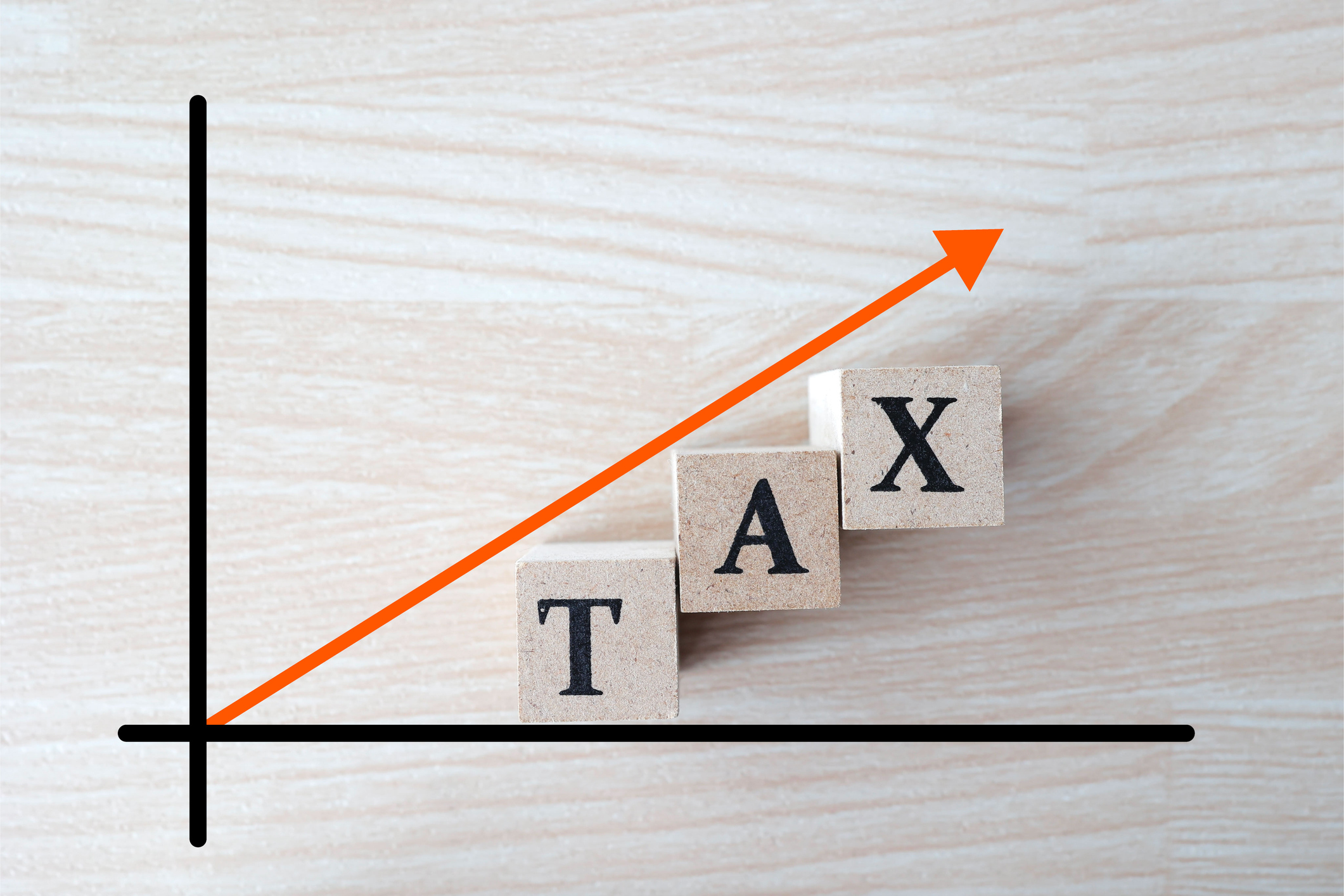Don’t Move to Another State Just to Reduce Your Taxes
If you’re retired or near retirement, maybe a smarter plan for retirement income will allow you to stay put. Yes, your state income tax rate may be higher, but your spendable income will be, too.


We know lots of friends who are considering moving from a high-tax state, such as New York, to a state with low or no state income taxes. They think they will end up with more money, although they are torn because they may also be moving away from family and friends just to escape state taxes.
What I advise them to do is think about spendable income — the amount they’ll have to spend after taxes — and not just low or zero tax rates. If you have more money to spend after paying the tax bill wherever you currently live, you might as well stay where you are, if it’s closer to the grandkids. You may be able to pay for at least one warm-weather winter trip, too.
Design a Smarter Retirement Income Plan
Before making life decisions about moving (or downsizing, purchasing insurance, etc.) retirees ought to know their number for their total starting income, and have a plan for retirement income that includes a projection of income and savings, and all planning assumptions.

Sign up for Kiplinger’s Free E-Newsletters
Profit and prosper with the best of expert advice on investing, taxes, retirement, personal finance and more - straight to your e-mail.
Profit and prosper with the best of expert advice - straight to your e-mail.
The income plan ought to cover:
- Starting income
- Inflation protection
- Beneficiary income protection
- Spousal income (if applicable)
- Plan management (when plan assumptions are not realized)
- Market risk to plan (when markets fluctuate)
- Legacy passed on to beneficiaries or heirs
All these subjects are covered in articles on Kiplinger.com. In one article, How to Generate an Extra $20,000 a Year in Retirement, we examined the income from our favorite investor (a 70-year-old woman with $2 million of savings, of which 50% is in a rollover IRA). We saw a large before-tax income advantage from Income Allocation planning. Even if she invests a portion of that to meet her legacy objective, she still has a $20,000 advantage in spendable annual income.
The question is whether she gives back that advantage in federal and state income taxes in her home state of New York.
Reducing your Combined Federal/State Retirement Tax %
You may have heard that New York is a high-tax state, and that’s true. It ranks No. 5 on Kiplinger’s list of the 10 least tax-friendly states for middle-class families.
Importantly, most states exclude Social Security income from taxation, as well as a portion of IRA distributions and employer pension plans. Together with interest on state and local bonds that is not taxed, a retiree has a head start in reducing state income taxes.
But the question remains how much of that advantage is eaten up in New York state income taxes. The key for our Go2Income planning is that annuity payments are treated the same in both the New York and federal tax returns, meaning the tax benefits carry over. And with some of the adjustments at the state level mentioned above, the favorable tax treatment of annuity payments may be even more valuable.
Let me share with you the high-level elements of our 70-year-old investor’s federal and New York state tax filing.

Benefits and Cost from this Planning
For our investor the income taxed by New York would be around $67,500 — or about 40% of her total gross income. As a percentage of total income, the state income tax is a little more than 2%. Even after adding federal taxes, her Retirement Tax Rate is less than 15%. That leaves her a big advantage in spendable income. A traditional plan without annuity payments and with lower income actually pays more in total taxes — with a combined tax rate of over 18%.
So, our plan produces more cash flow from savings, much of it tax-favored, and gives our retiree the freedom to live where she prefers.
And the cost? The primary one is that annuity payments don’t continue at your passing even before the premium has been recovered.
You can elect a beneficiary protection feature that makes sure total annuity payments will equal the premium at a minimum. However, that choice will reduce the level of guaranteed annuity payments and some of the tax benefits. Or you can use the higher annuity payments to purchase some life insurance. And those planning choices aren’t the only options you will have in terms of beneficiary protection.
What if the lure of zero state income taxes is too great? Our retiree could move to Florida, save the $3,500 in New York taxes, adopt a Go2Income plan for her circumstances — and pay for the kids’ trips to visit her.
So be with the kids, live where you want and possibly leave less at your passing if it’s early in retirement. Bottom line: Don’t follow the crowd. Do your own research. And rely on resources at Kiplinger.
At Go2Income, we can provide you with a complimentary personalized plan that delivers both a high starting income and growing lifetime income, as well as long-term savings.
Get Kiplinger Today newsletter — free
Profit and prosper with the best of Kiplinger's advice on investing, taxes, retirement, personal finance and much more. Delivered daily. Enter your email in the box and click Sign Me Up.

Jerry Golden is the founder and CEO of Golden Retirement Advisors Inc. He specializes in helping consumers create retirement plans that provide income that cannot be outlived. Find out more at Go2income.com, where consumers can explore all types of income annuity options, anonymously and at no cost.
-
 Which Generation Pays the Most Taxes in the US?
Which Generation Pays the Most Taxes in the US?Tax Burden Polls show that most people feel like taxes are unfair. But which age group bears the brunt of the tax burden in the United States?
By Kelley R. Taylor
-
 How Much Will Car Prices Go Up With Tariffs?
How Much Will Car Prices Go Up With Tariffs?Tariffs could drive car prices up even higher, for new and used cars, as well as for American brands.
By Jim Patterson
-
 A QLAC Does So Much More Than Simply Defer Taxes
A QLAC Does So Much More Than Simply Defer TaxesHere are the multiple ways you can use a QLAC, from managing retirement risks to creating income for specific retirement needs and wants.
By Jerry Golden, Investment Adviser Representative
-
 Self-Directed Brokerage Accounts: Retirement's Hidden Gem?
Self-Directed Brokerage Accounts: Retirement's Hidden Gem?SDBAs are often overlooked, but they can offer more flexibility and growth potential inside your 401(k) when actively managed by a professional.
By Scott M. Dougan, RFC, Investment Adviser
-
 Early-Stage Startup Deals: How Does a SAFE Work?
Early-Stage Startup Deals: How Does a SAFE Work?Investing in an early-stage startup can get complicated fast, so the venture capital industry turns to other investing options. One is a SAFE.
By Murat Abdrakhmanov
-
 Should You Hire a Public Adjuster for Your Insurance Claim?
Should You Hire a Public Adjuster for Your Insurance Claim?As natural disasters strike more often, insurance clients are asking, 'What should I do, or who should I hire, if my insurance company is jerking me around?'
By H. Dennis Beaver, Esq.
-
 Tips to Help Entrepreneurs Create Self-Sustaining Businesses
Tips to Help Entrepreneurs Create Self-Sustaining BusinessesWith the right processes and people in place, a truly sustainable business can be efficiently passed on to a successor and run profitably on its own.
By Jason L Smith, CEP®, BPC
-
 Navigating Annuity Taxation: A Guide for Financial Advisers
Navigating Annuity Taxation: A Guide for Financial AdvisersUnderstanding the essentials of taxation in retirement income strategies involving annuities helps ensure positive outcomes for clients.
By Jake Klima
-
 How Google Reviews Can Help (or Hurt) Financial Advisers
How Google Reviews Can Help (or Hurt) Financial AdvisersDon't leave your Google Business Profile unclaimed — someone else can make changes if they claim it. Also, here's what you can (and cannot) do with the reviews.
By Jeff Briskin
-
 How Baby Boomers and Gen Xers Are Redefining Retirement Living
How Baby Boomers and Gen Xers Are Redefining Retirement LivingBoth generations need to embrace change and leverage real estate as a dynamic asset in their retirement planning. Here's how financial advisers can help, too.
By David Conti, CPRC